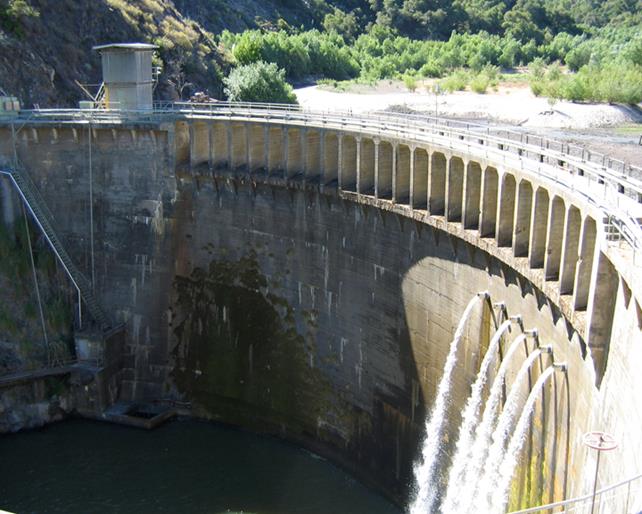
Authors -- Brian Stranko, The Nature Conservancy, Director of the North & Central Coast Region & Robert MacLean, President of California American Water
There was a time when the Carmel River was known as one of the most vital steelhead trout runs in California. But since the San Clemente Dam was built on the river in 1921, the river has rapidly eroded.
Today, the once vibrant steelhead runs have dramatically decreased. Steelhead populations are down a staggering 90 percent from what they were in 1950. In addition, this antiquated dam no longer provides the significant water storage for the community for which it was originally intended--the reservoir is more than 95 percent full of sediment, a result of the disruption of the natural flow of sediment through the river. And this seismically unsafe, obsolete dam--which could collapse in a major earthquake or other natural disaster--threatens the lives and property located below it. To put it bluntly: The dam is now more of a risk than a benefit.
The great news is that this summer The Nature Conservancy and partners will begin removing the dam and implementing a restoration process that will bring the Carmel River back to life, opening 25 miles of awesome habitat. The California State Coastal Conservancy, the National Marine Fisheries Services of the National Oceanic and Atmospheric Administration (NOAA) and California American Water are implementing the $83 million San Clemente Dam Removal and Carmel River Reroute Project. And The Nature Conservancy is an advisor, fundraiser and donor.
This is the largest dam-removal project in the history of California, and it sets a precedence for other dam-removal and river-restoration projects in California and nationwide. Having worked in the region for decades, the Conservancy is advising on how to restore the habitat and bring back the steelhead, creating a model that can be used throughout the western United States.
Benefitting People and Nature
Removing the archaic dam will permanently remove the public safety risk posed by the potential collapse of the dam, which now threatens 1,500 homes and other public buildings. Removing the dam will also reduce beach erosion that now contributes to the destabilization of homes, roads and infrastructure. Another great benefit will be the protection of more than 900 acres of coastal watershed lands, contributing to a network of more than 5,400 acres of connected regional parks.
Taking down the dam will be a significant step toward the recovery of our threatened south-central California coast steelhead. Without the dam, the fish will have unimpeded access to more than 25 miles of essential spawning and rearing habitat. The river's natural sediment flow will return, helping replenish sand on Carmel Beach and improving the steelhead habitat downstream. Dam removal will also re-establish a healthy connection between the lower Carmel River and the watershed above San Clemente Dam.
About That Sediment
One of the challenges we face with removing this dam is what to do with the enormous amount of sediment that has built up over the past 92 years. The partners came up with an innovative engineering solution to reroute the river around the accumulated sediment for one-half mile, ensuring that sediment doesn't start moving downstream during high flows. This unique approach eliminates the high cost and jarring environmental impact of transporting the sediment to a different location, while also avoiding increased flood risk for downstream property owners.
Removing the San Clemente Dam is a huge first step in revitalizing California's rivers, the lifeblood of our state's diverse ecosystems and economy. California's network of rivers, reservoirs, aqueducts and canals supports our $1.8 trillion economy and population of nearly 38 million. The San Clemente Dam is one of more than 1,400 in California, many of which are nearing the end of their useful lives. With the success of this dam removal, perhaps we can apply what we learn to other locations around the state.